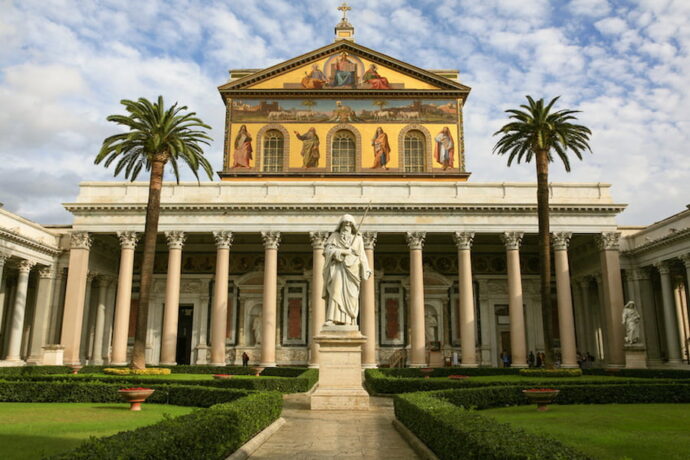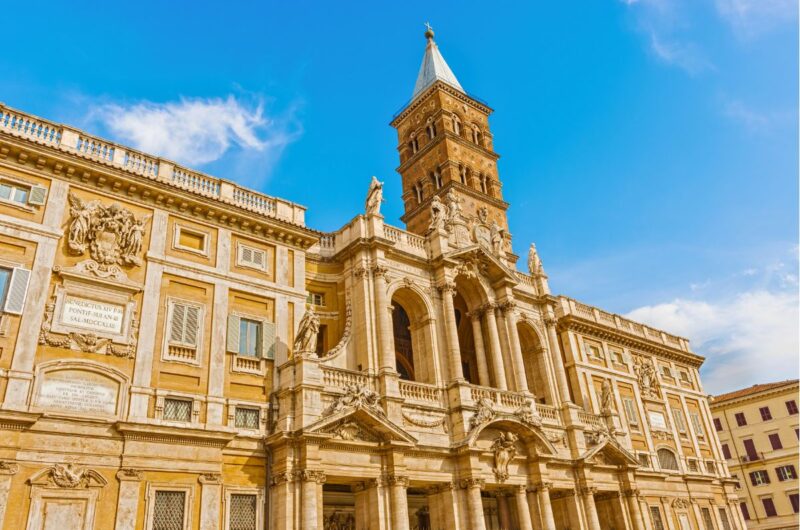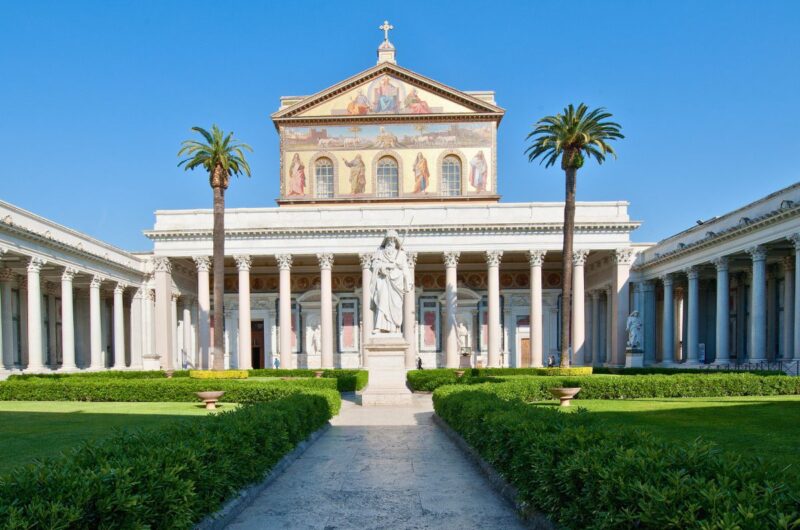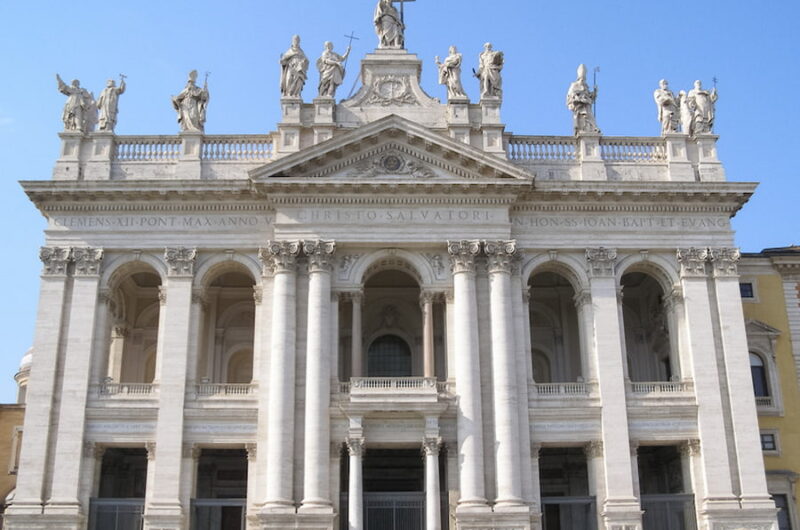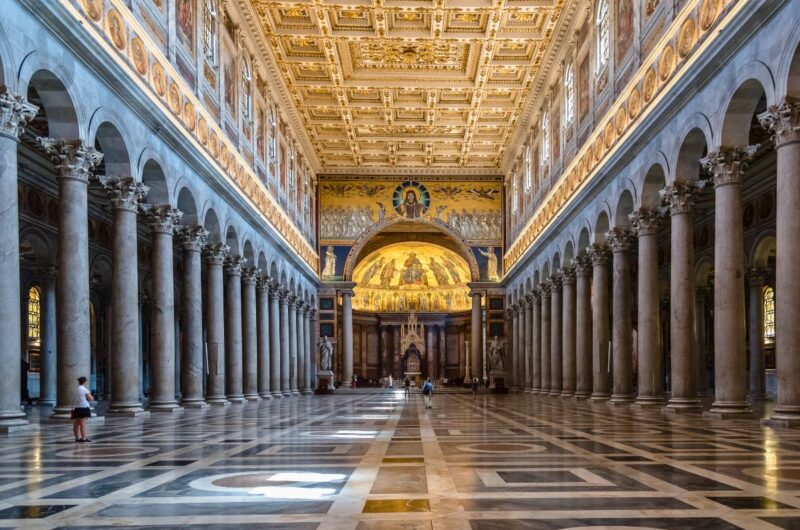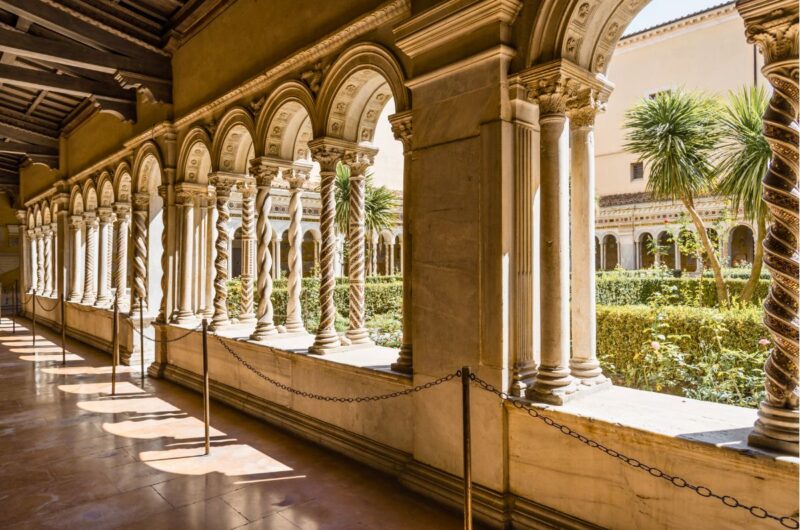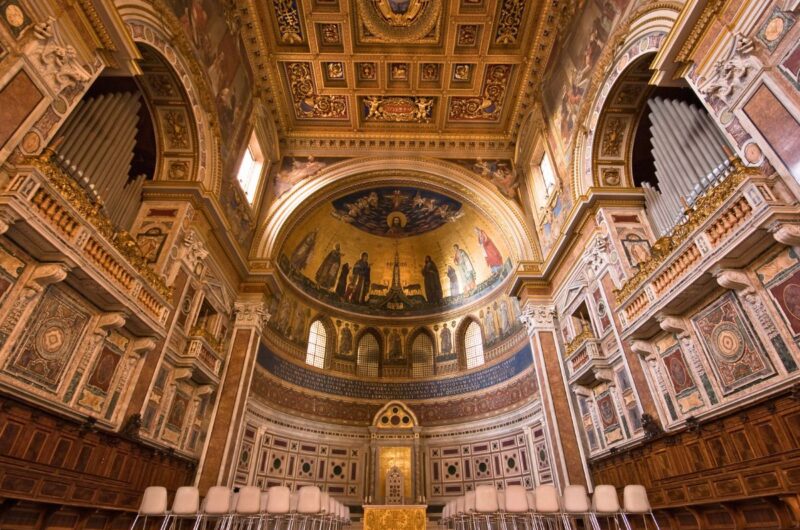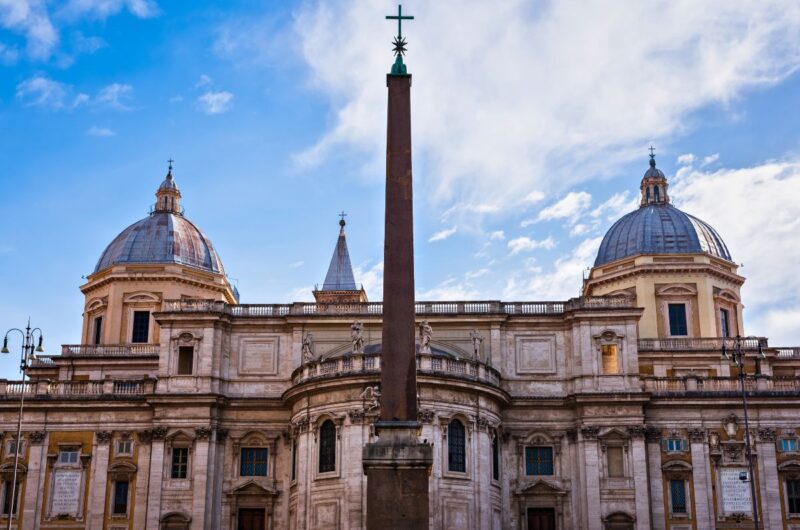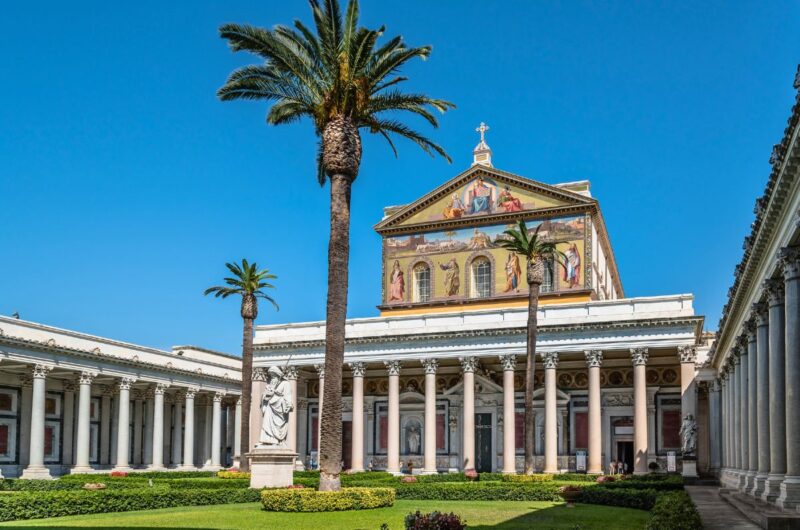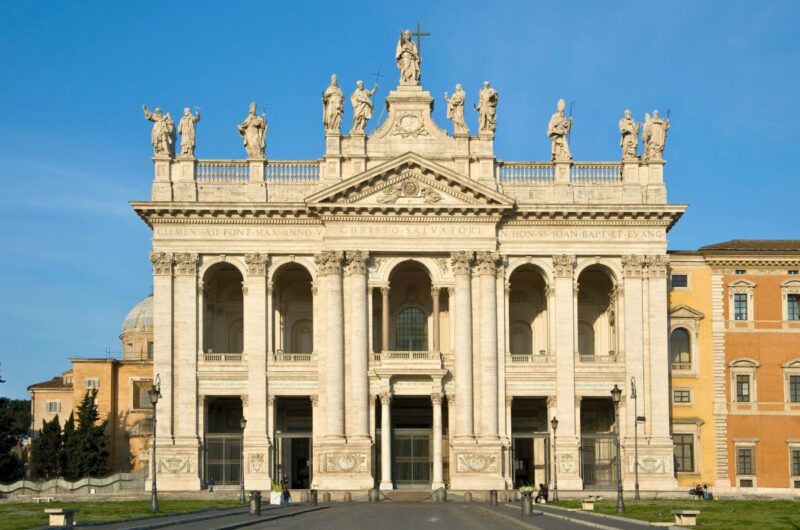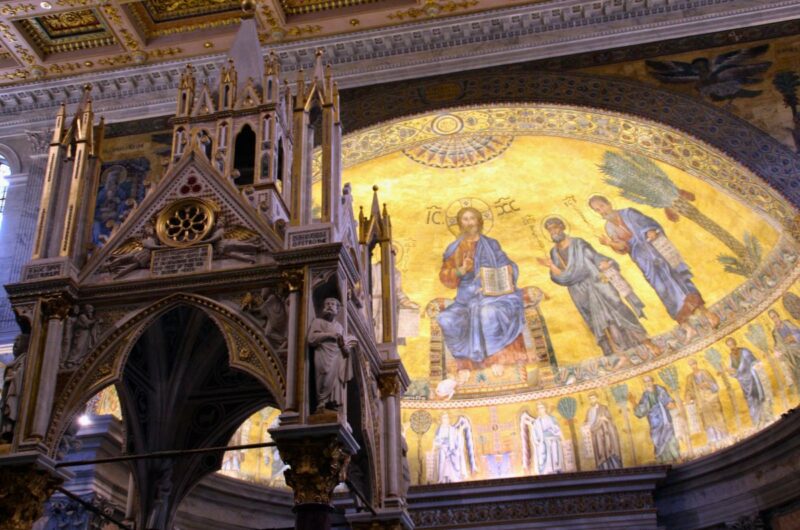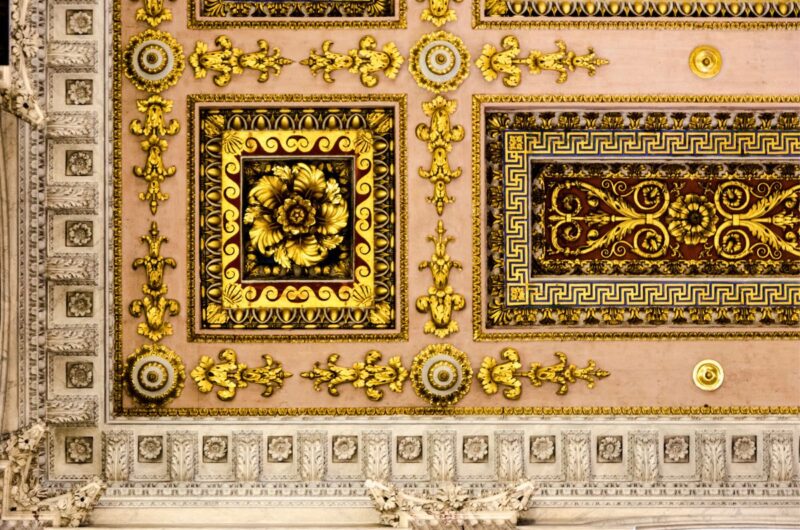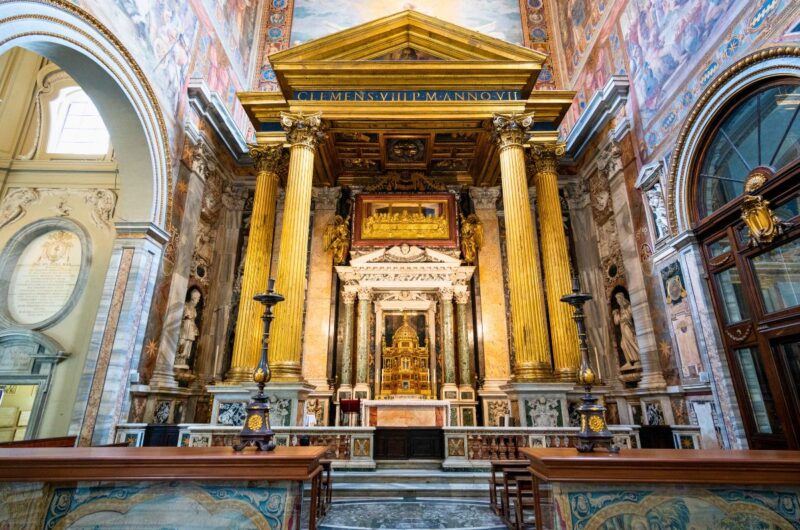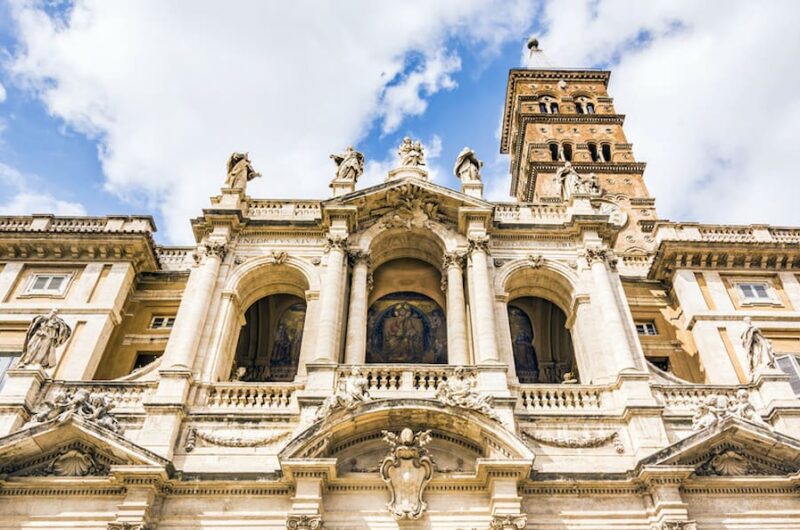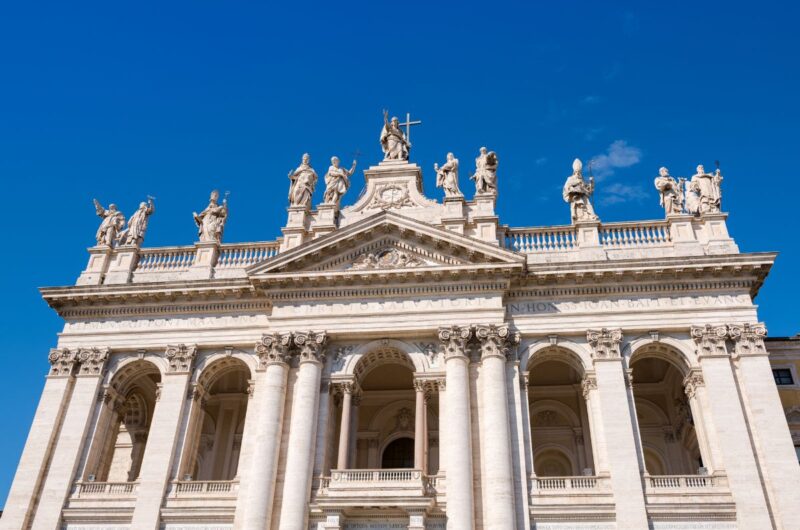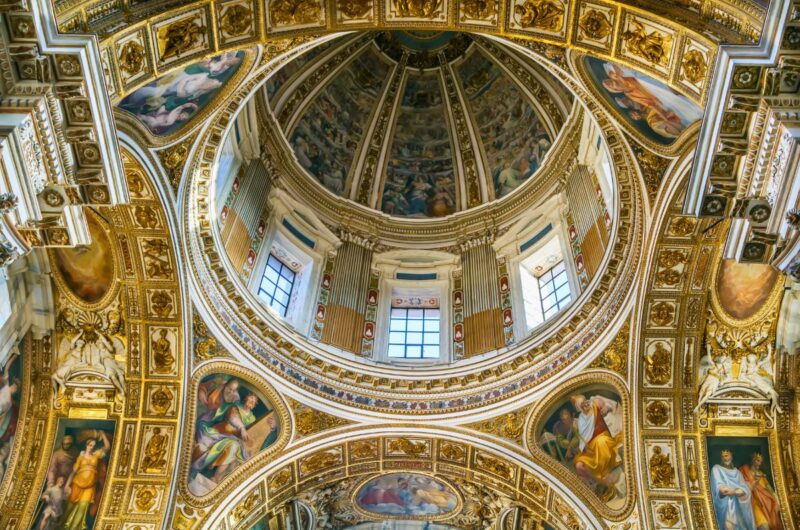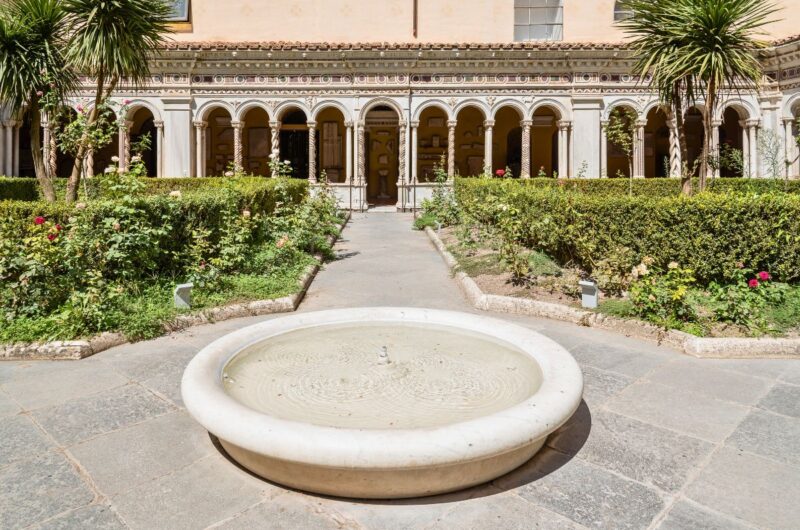There are four papal basilicas in Rome, each with a Holy Door that remains locked shut until the Pope opens them for a jubilee year on Christmas Eve. The tradition of the “Jubilee Year” was created in 1300 by Pope Boniface VIII as an antidote to war and famine. It proved so popular with Catholics that now it happens every 25 years.
This private tour is your pilgrimage to the papal Basilicas beyond the Vatican. Your expert guide will meet you at St. John in Lateran. This is the most important basilica in Rome being the seat of the Bishop of Rome, also known as… the Pope. It is also the site of the very first legal Christian church in the world. Until the 14th century, the Lateran palace was home to the Papacy and the Curia. When Pope Martin V returned to Rome from Avignon after the Great Schism, the palace had collapsed due to an earthquake – so he moved to the Vatican.
Today the basilica is known as the Head and Mother of All Churches, and is a baroque masterpiece by Francesco Borromini with a spectacular façade. The great bronze doors are the original doors to the Ancient Roman senate. The interior is cool and calm, the nave lined with statues of the apostles, and you can play with the ‘whispering arches’ on the side aisles.
On exiting the basilica, hop in a private car and head to the Basilica of Saint Paul Outside the Walls, built on top of Saint Paul’s tomb, which you can still glimpse beneath the altar. A fire in the 19th century destroyed 90% of the church, and it was rebuilt with donated marble from Egypt, Russia, and Greece. The vast nave is lined with 80 pillars, above which you’ll see portraits of every pope since Saint Peter. A vast, golden mosaic of Christ looms large over the nave and a precious medieval Easter candle that survived the fire. Saint Paul’s also has a Vatican post office, gift shop, and café, as well as a very peaceful cloister for quiet contemplation.
After your visit to St. Paul’s, you’ll be driven to St. Mary Major or Santa Maria Maggiore. Dedicated to the Virgin Mary, the basilica dates back to the 5th century and boasts the tallest bell tower in Rome, beautiful 13th-century golden mosaics, a relic of the Manger, Bernini’s grave, and the tomb of Paulina, Napoleon Bonaparte’s sister. The ceiling is reputed to be Inca gold donated by the catholic monarchs Ferdinand and Isabella of Spain. While visiting, you will climb a grand staircase to reach the exquisite Loggia, where golden mosaics recount the 4th-century miracle of Saint Mary of the Snows—an event still celebrated every August 4th with white rose petals cascading from the ceiling.


